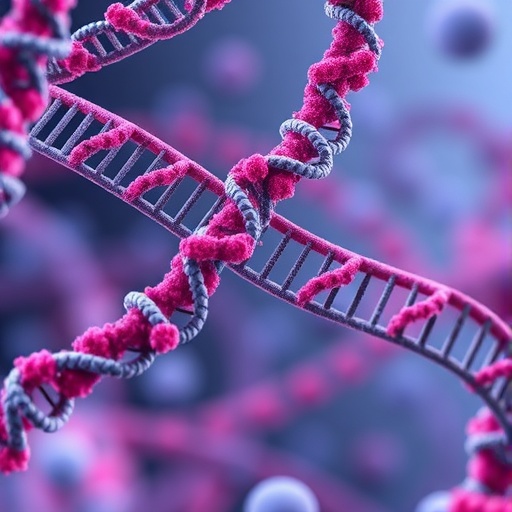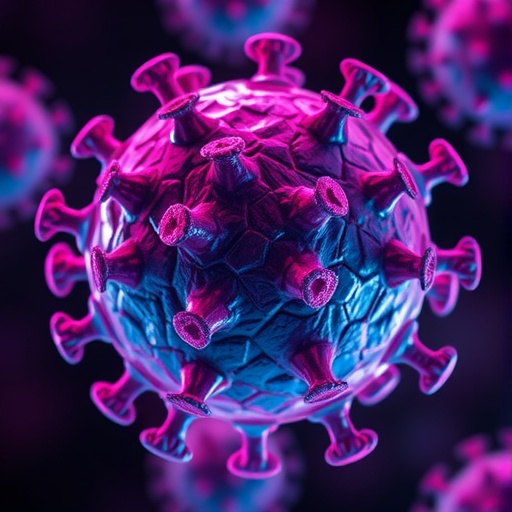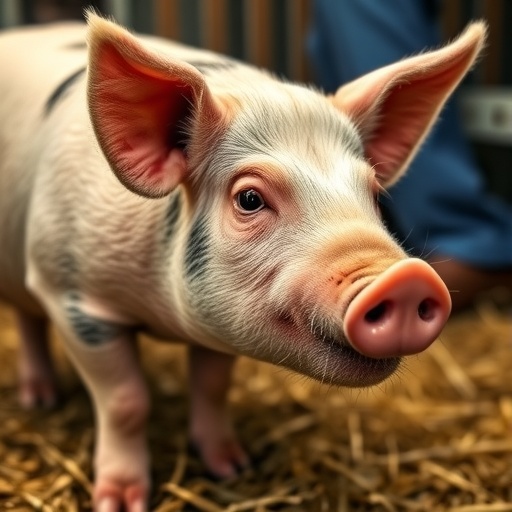In the intricate world of gene regulation, Argonaute (AGO) proteins stand out as indispensable players, wielding small interfering RNAs (siRNAs) to achieve the precise cleavage of target RNA molecules. This essential process underpins the ability of cells to silence undesired or harmful transcripts, maintaining cellular homeostasis and defending against viral threats. Recently, a groundbreaking study has illuminated the detailed mechanism through which human AGO2—one of the AGO-clade Argonaute proteins—recognizes and cleaves its RNA targets, addressing longstanding questions about structural constraints and enzymatic efficacy. Utilizing state-of-the-art cryo-electron microscopy (cryo-EM), researchers have now mapped the conformational journey of the AGO2–siRNA complex as it engages diverse lengths of target RNA, revealing a finely tuned choreography of molecular rearrangements that culminate in target cleavage.
Argonaute proteins function by loading siRNAs, which guide these molecular scissors to complementary sequences on target RNAs. The hallmark of AGO-clade Argonautes is their stringent requirement for near-perfect base pairing between siRNA and target RNA, facilitating cleavage precisely at the matched site. However, a paradox exists: AGO proteins possess a constricted nucleic acid-binding channel that limits extensive base pairing beyond a critical “seed” region, typically encompassing the first 2 to 8 nucleotides from the 5′ end of the guide siRNA. This structural feature appeared at odds with the experimental demonstration that extensive pairing beyond the seed is often necessary for catalytic cleavage efficiency. The conundrum of how AGO–siRNA complexes overcome this apparent steric limitation to enable effective slicing has now been brought into sharp focus.
The team led by Li and colleagues embarked on a meticulous cryo-EM investigation of human AGO2 loaded with siRNAs bound to target RNAs of incrementally increasing length. This high-resolution structural approach permitted the visualization of distinct molecular states along the binding and cleavage pathway. Initial observations showed that upon target RNA engagement, AGO2 initiates a conformational shift beginning with the opening of the PAZ domain—a specialized region known to bind the 3′ end of the siRNA. This opening is not an isolated event; rather, it propagates through the protein architecture, orchestrating a repositioning of the composite PIWI–L1–N domain ensemble toward the siRNA–target duplex.
This repositioning is pivotal because it facilitates the capture and stabilization of the growing siRNA–target RNA helix within AGO2’s nucleic acid-binding channel, a crucial step to evading the physical constraints imposed by the narrow passageway. As base pairing between the guide and the target extends beyond the seed region, further conformational dynamics ensue. The PIWI–L1–N domain, previously nudged closer, undergoes a downward movement perpendicular to the binding channel, effectively priming the catalytic site within AGO2. This repositioning aligns the scissile phosphate of the target RNA within reach of catalytic residues, setting the stage for precise endonucleolytic cleavage.
Intriguingly, the structural data disclosed an unexpected architectural rearrangement upon even further base pairing beyond the 3′ end of the siRNA. The PAZ domain and the adjacent N domain become destabilized, culminating in a “uni-lobed” conformation of the AGO2 complex. This architectural switch appears to relax the complex into a more open and single-lobed state compared to the “bilobed” appearance observed in early binding stages. The authors theorize that this uni-lobed structure plays a functional role beyond mere structural rearrangement—potentially facilitating multi-turnover catalysis, whereby AGO2 can dissociate cleaved product RNA and engage subsequent targets rapidly and efficiently.
The elucidation of this multi-step mechanism reconciles prior biophysical and biochemical data that hinted at dynamic flexibility within AGO2 but lacked direct structural corroboration. Moreover, when contrasted with PIWI-clade Argonautes—another evolutionary branch specialized for piRNAs—the AGO2 uni-lobed form exhibits distinct contact patterns with the central region of the siRNA–target duplex. In PIWI proteins, the target RNA is engaged differently, reflecting their divergent biological roles and cleavage modalities. This comparative insight broadens our understanding of how Argonaute proteins, derived from a common ancestral origin, have evolved specialized mechanisms tailored to their unique RNA targets and cellular functions.
Beyond its structural revelations, the research has significant implications for RNA interference (RNAi)-based therapeutic strategies. Understanding exactly how AGO2 accommodates extensive base pairing with target RNAs under spatial constraints can guide the rational design of siRNAs with improved specificity and cleavage efficiency. Potentially, this could reduce off-target effects and enhance the potency of RNAi drugs. Additionally, discovering the uni-lobed state opens a new conceptual avenue for modulating AGO2 activity, possibly through small molecules or engineered proteins that stabilize or destabilize specific conformations to influence catalytic turnover.
These findings also resonate with burgeoning interests in programmable RNA-guided enzymes beyond CRISPR systems. AGO2 exemplifies a naturally evolved RNA-guided nuclease optimized through millions of years of molecular tinkering, and leveraging its mechanistic nuances promises novel biotechnological applications. For example, artificial siRNA designs that exploit the conformational transitions described might be employed to regulate gene expression with unprecedented precision or generate synthetic systems with tailored catalytic cycles.
Importantly, this study underscores the power of cryo-EM as a transformative technique in molecular biology, enabling the capture of transient intermediates and dynamic conformational ensembles previously inaccessible to structural methods like X-ray crystallography. By capturing AGO2–siRNA complexes bound to targets of varying length, the researchers constructed a quasi-movie of the recognition and cleavage process, marking a milestone in our structural and mechanistic understanding of RNA-guided cleavage enzymes.
The research by Li and colleagues not only fills a critical knowledge gap but also invites new questions. For instance, how is the transition to the uni-lobed form regulated within the cellular milieu? Are there auxiliary factors or post-translational modifications that influence AGO2’s conformational landscape or turnover rates? Furthermore, does this mechanism vary across different human Argonaute paralogs, or does it represent a universal paradigm for AGO-mediated target cleavage?
In sum, the detailed mechanistic insight offered into the stepwise conformational adaptation of the human AGO2–siRNA complex during target RNA cleavage advances our grasp of RNA interference at the atomic level. By unraveling how structural domains coordinate to bypass nucleic acid-binding channel constraints and enable enzymatic action, this work charts a clear path forward for both fundamental biology and therapeutic innovation. As the molecular narrative of Argonaute proteins continues to unfold, such landmark discoveries illuminate the exquisite molecular engineering that sustains life’s precise control over genetic information.
Subject of Research:
Mechanistic elucidation of human Argonaute2–siRNA complex conformational dynamics and target RNA cleavage.
Article Title:
Mechanistic insights into RNA cleavage by human Argonaute2–siRNA complex.
Article References:
Li, Z., Xu, Q., Zhang, Y. et al. Mechanistic insights into RNA cleavage by human Argonaute2–siRNA complex.
Cell Res (2025). https://doi.org/10.1038/s41422-025-01114-7
Image Credits: AI Generated
Tags: AGO proteins functionArgonaute-clade proteinsbase pairing requirements in siRNAcryo-electron microscopy studyenzymatic efficacy of AGO2human Argonaute2 mechanismmolecular rearrangements in RNARNA gene regulationRNA silencing mechanismssiRNA target cleavagestructural constraints in RNA cleavagetarget RNA recognition





